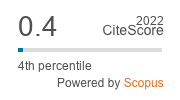Establishing biodiversity in dwarf honey bee, Apis florea F. (Hymenoptera: Apidae) workers from north western India based on morphometrics of antenna and mouth parts
Keywords:
Apis florea, biodiversity, intra-specific, morphometrics, antenna, mouth partsAbstract
The present study was conducted on two head appendages viz. antenna and mouth parts to report morphometric differences in 7 different populations of Apis florea F. collected from foot hill regions of Himachal Pradesh (Bangana, Chintpurni, Hamirpur, Parwanoo, Daulatpur and Gagret) and Chandigarh plains (Chandigarh) of north western India. Collection was made during mid June- mid September months of the year, 2010-14. Ten morphometric characters and 4 biometric indices were statistically analyzed by means of factor analysis, discriminant analysis and cluster analysis. Chandigarh and Gagret regions having low altitude tend to show higher values of more number of morphometric characters while Bangana region with high altitude showed the opposite. For both antenna and tongue maximum numbers of characteristics with higher values were in Gagret region while maximum number of characteristics with lower values was exhibited by Bangana population of A. florea. The majority of characteristics of the tongue were significantly correlated with altitude suggesting that characteristics associated with foraging were more prone to be affected by altitude.


